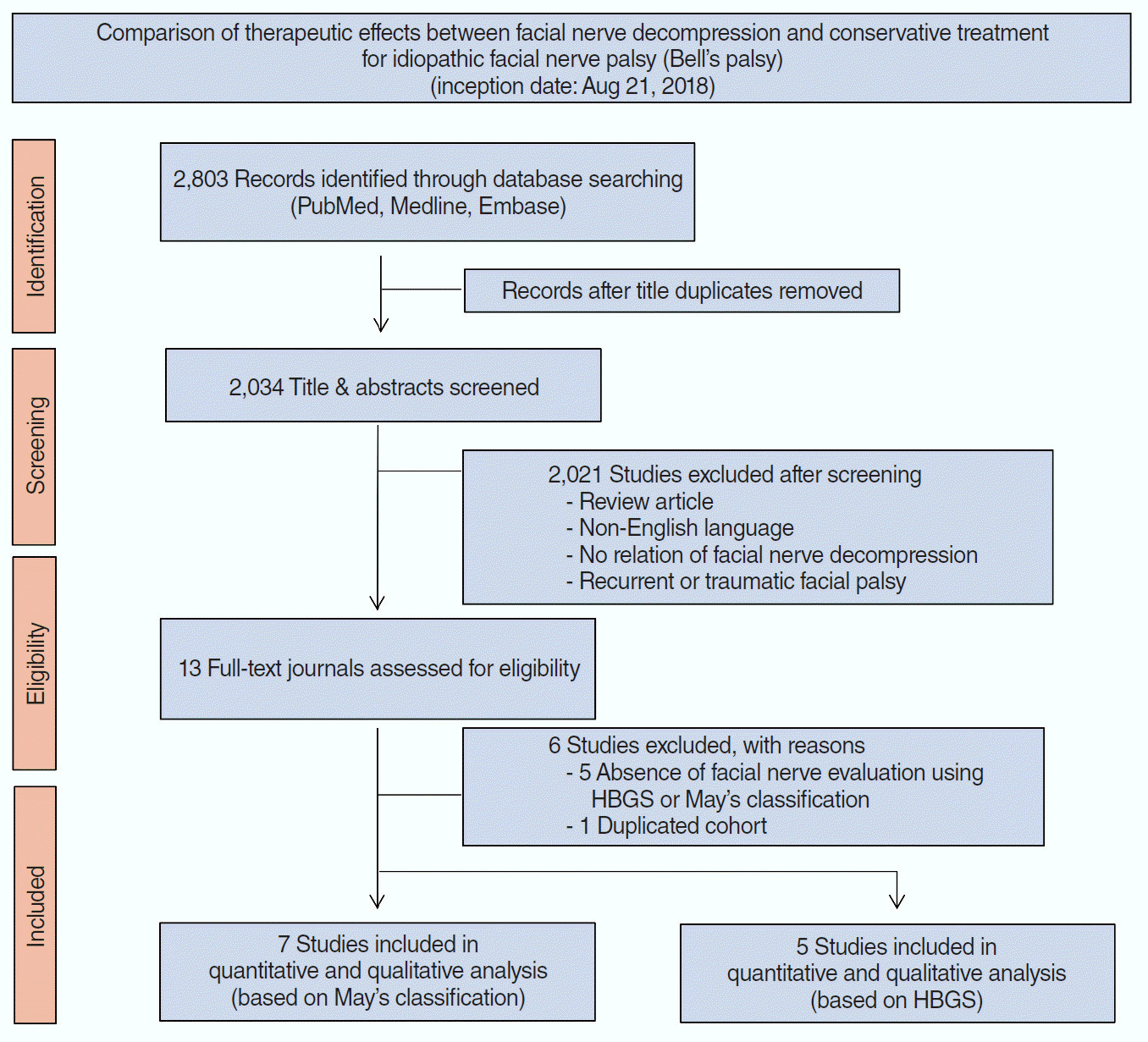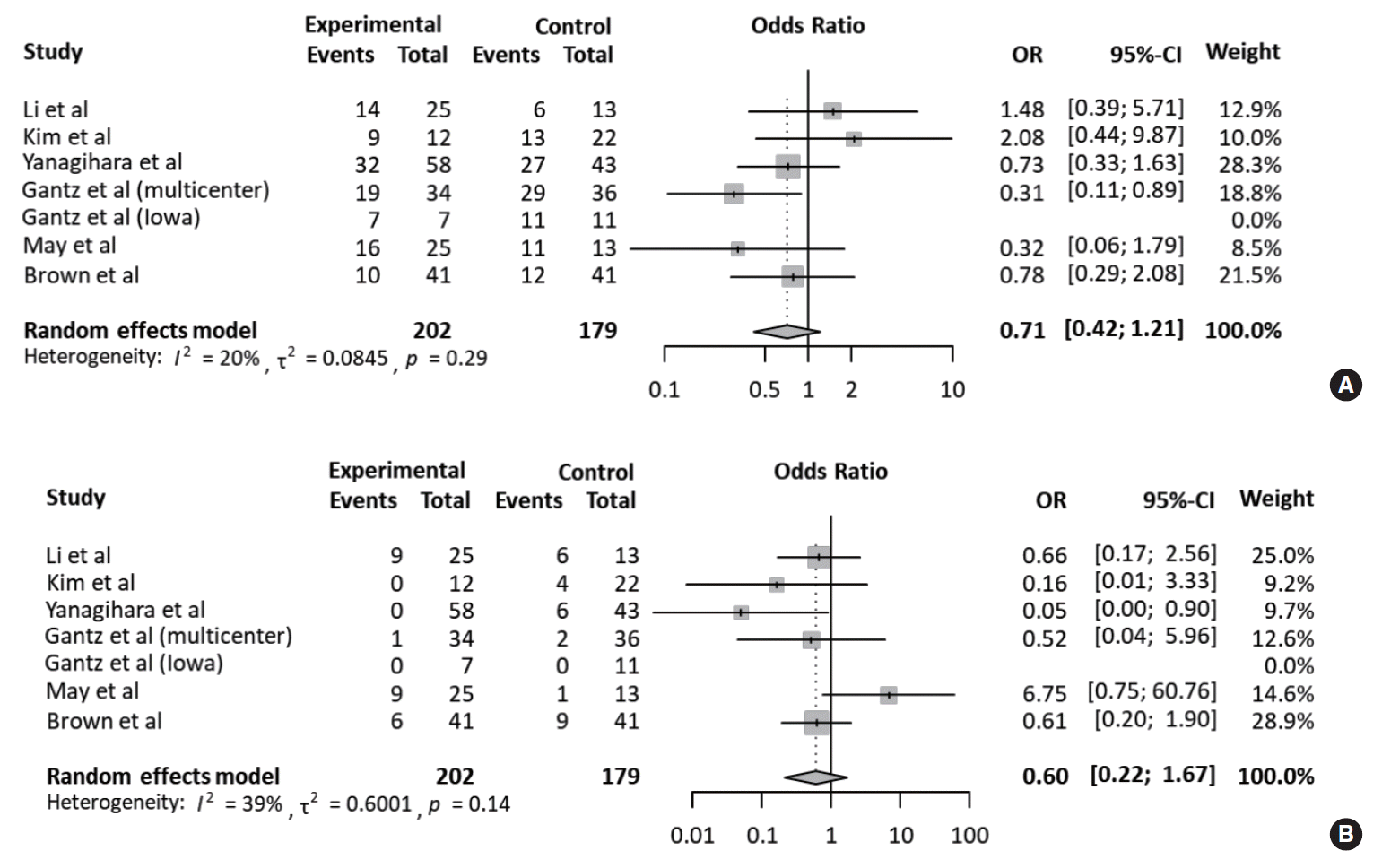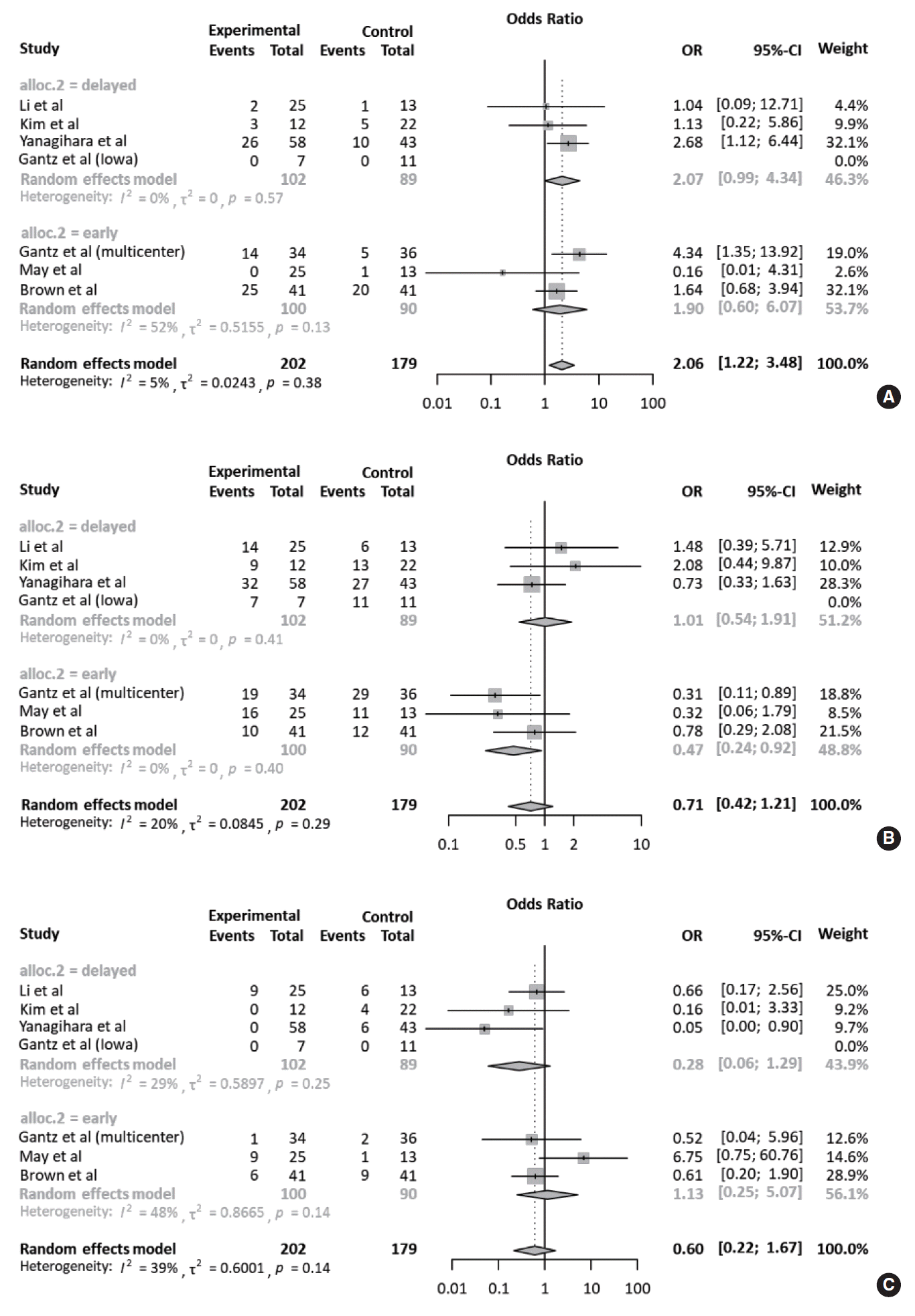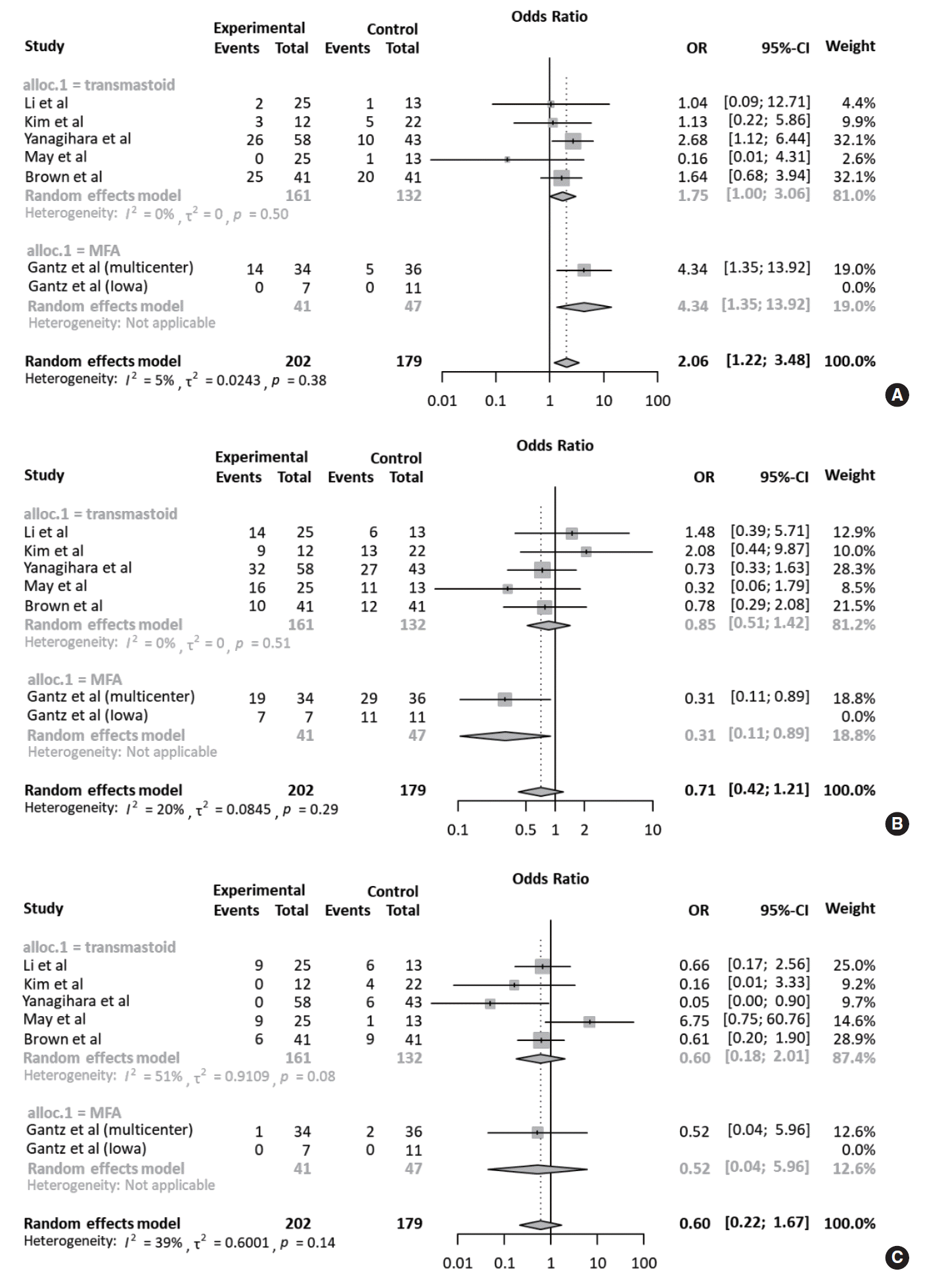1. Sun DQ, Andresen NS, Gantz BJ. Surgical management of acute facial palsy. Otolaryngol Clin North Am. 2018; Dec. 51(6):1077–92.

2. Peitersen E. Natural history of Bell’s palsy. Acta Otolaryngol Suppl. 1992; 492:122–4.

3. Andresen NS, Sun DQ, Hansen MR. Facial nerve decompression. Curr Opin Otolaryngol Head Neck Surg. 2018; Oct. 26(5):280–5.

4. Mantsopoulos K, Psillas G, Psychogios G, Brase C, Iro H, Constantinidis J. Predicting the long-term outcome after idiopathic facial nerve paralysis. Otol Neurotol. 2011; Jul. 32(5):848–51.

5. Holland NJ, Weiner GM. Recent developments in Bell’s palsy. BMJ. 2004; Sep. 329(7465):553–7.

6. Adour KK. Combination treatment with acyclovir and prednisone for Bell palsy. Arch Otolaryngol Head Neck Surg. 1998; Jul. 124(7):824.

7. Peitersen E. Bell’s palsy: the spontaneous course of 2,500 peripheral facial nerve palsies of different etiologies. Acta Otolaryngol Suppl. 2002; (549):4–30.

8. Kim SH, Jung J, Lee JH, Byun JY, Park MS, Yeo SG. Delayed facial nerve decompression for Bell’s palsy. Eur Arch Otorhinolaryngol. 2016; Jul. 273(7):1755–60.

9. Fisch U. Surgery for Bell’s palsy. Arch Otolaryngol. 1981; Jan. 107(1):1–11.

10. McAllister K, Walker D, Donnan PT, Swan I. Surgical interventions for the early management of Bell’s palsy. Cochrane Database Syst Rev. 2013; Oct. (10):CD007468.

11. Casazza GC, Schwartz SR, Gurgel RK. Systematic review of facial nerve outcomes after middle fossa decompression and transmastoid decompression for Bell’s palsy with complete facial paralysis. Otol Neurotol. 2018; Dec. 39(10):1311–8.

12. Liberati A, Altman DG, Tetzlaff J, Mulrow C, Gotzsche PC, Ioannidis JP, et al. The PRISMA statement for reporting systematic reviews and meta-analyses of studies that evaluate health care interventions: explanation and elaboration. PLoS Med. 2009; Jul. 6(7):e1000100.

13. Brown JS. Bell’s palsy: a 5 year review of 174 consecutive cases: an attempted double blind study. Laryngoscope. 1982; Dec. 92(12):1369–73.
14. Aoyagi M, Koike Y, Ichige A. Results of facial nerve decompression. Acta Otolaryngol Suppl. 1988; 446:101–5.

15. Adour KK, Byl FM, Hilsinger RL Jr, Kahn ZM, Sheldon MI. The true nature of Bell’s palsy: analysis of 1,000 consecutive patients. Laryngoscope. 1978; May. 88(5):787–801.
16. Mechelse K, Goor G, Huizing EH, Hammelburg E, van Bolhuis AH, Staal A, et al. Bell’s palsy: prognostic criteria and evaluation of surgical decompression. Lancet. 1971; Jul. 2(7715):57–9.

17. McNeill R. Facial nerve decompression. J Laryngol Otol. 1974; May. 88(5):445–55.
18. May M, Blumenthal F, Taylor FH. Bell’s palsy: surgery based upon prognostic indicators and results. Laryngoscope. 1981; Dec. 91(12):2092–103.
19. Li Y, Sheng Y, Feng GD, Wu HY, Gao ZQ. Delayed surgical management is not effective for severe Bell’s palsy after two months of onset. Int J Neurosci. 2016; Nov. 126(11):989–95.

20. Yanagihara N, Hato N, Murakami S, Honda N. Transmastoid decompression as a treatment of Bell palsy. Otolaryngol Head Neck Surg. 2001; Mar. 124(3):282–6.

21. Gantz BJ, Rubinstein JT, Gidley P, Woodworth GG. Surgical management of Bell’s palsy. Laryngoscope. 1999; Aug. 109(8):1177–88.

22. May M, Klein SR, Taylor FH. Idiopathic (Bell’s) facial palsy: natural history defies steroid or surgical treatment. Laryngoscope. 1985; Apr. 95(4):406–9.
23. Mattox DE. Clinical disorders of the facial nerve. In : Flint PW, editor. Otolaryngology head and neck surgery review. 3rd ed. St. Louis (MO): Mosby-Year Book;1998. p. 2767–84.
24. Greco A, Gallo A, Fusconi M, Marinelli C, Macri GF, de Vincentiis M. Bell’s palsy and autoimmunity. Autoimmun Rev. 2012; Dec. 12(2):323–8.

25. Paolino E, Granieri E, Tola MR, Panarelli MA, Carreras M. Predisposing factors in Bell’s palsy: a case-control study. J Neurol. 1985; 232(6):363–5.

26. Jain S, Kumar S. Bell’s palsy: a need for paradigm shift. Ann Otol Neurotol. 2018; 1(01):034–9.

27. Owusu JA, Boahene KD. Bell’s palsy. In : Kountakis SE, editor. Encyclopedia of otolaryngology, head and neck surgery. Berlin, Heidelberg: Springer;2013. p. 256–8.
28. Baugh RF, Basura GJ, Ishii LE, Schwartz SR, Drumheller CM, Burkholder R, et al. Clinical practice guideline: Bell’s palsy. Otolaryngol Head Neck Surg. 2013; Nov. 149(3 Suppl):S1–27.

29. Pulec JL. Early decompression of the facial nerve in Bell’s palsy. Ann Otol Rhinol Laryngol. 1981; Nov-Dec. 90(6 Pt 1):570–7.

30. Gelberman RH, Eaton RG, Urbaniak JR. Peripheral nerve compression. Instr Course Lect. 1994; 43:31–53.

31. Jackson CG, von Doersten PG. The facial nerve: current trends in diagnosis, treatment, and rehabilitation. Med Clin North Am. 1999; Jan. 83(1):179–95.
32. Berania I, Awad M, Saliba I, Dufour JJ, Nader ME. Delayed facial nerve decompression for severe refractory cases of Bell’s palsy: a 25-year experience. J Otolaryngol Head Neck Surg. 2018; Jan. 47(1):1.

33. Gillman GS, Schaitkin BM, May M, Klein SR. Bell’s palsy in pregnancy: a study of recovery outcomes. Otolaryngol Head Neck Surg. 2002; Jan. 126(1):26–30.

34. Lee DH, Chae SY, Park YS, Yeo SW. Prognostic value of electroneurography in Bell’s palsy and Ramsay-Hunt’s syndrome. Clin Otolaryngol. 2006; Apr. 31(2):144–8.

35. Brenner MJ, Neely JG. Approaches to grading facial nerve function. Semin Plast Surg. 2004; Feb. 18(1):13–22.
36. Takemoto N, Horii A, Sakata Y, Inohara H. Prognostic factors of peripheral facial palsy: multivariate analysis followed by receiver operating characteristic and Kaplan-Meier analyses. Otol Neurotol. 2011; Aug. 32(6):1031–6.










 PDF
PDF Citation
Citation Print
Print



 XML Download
XML Download